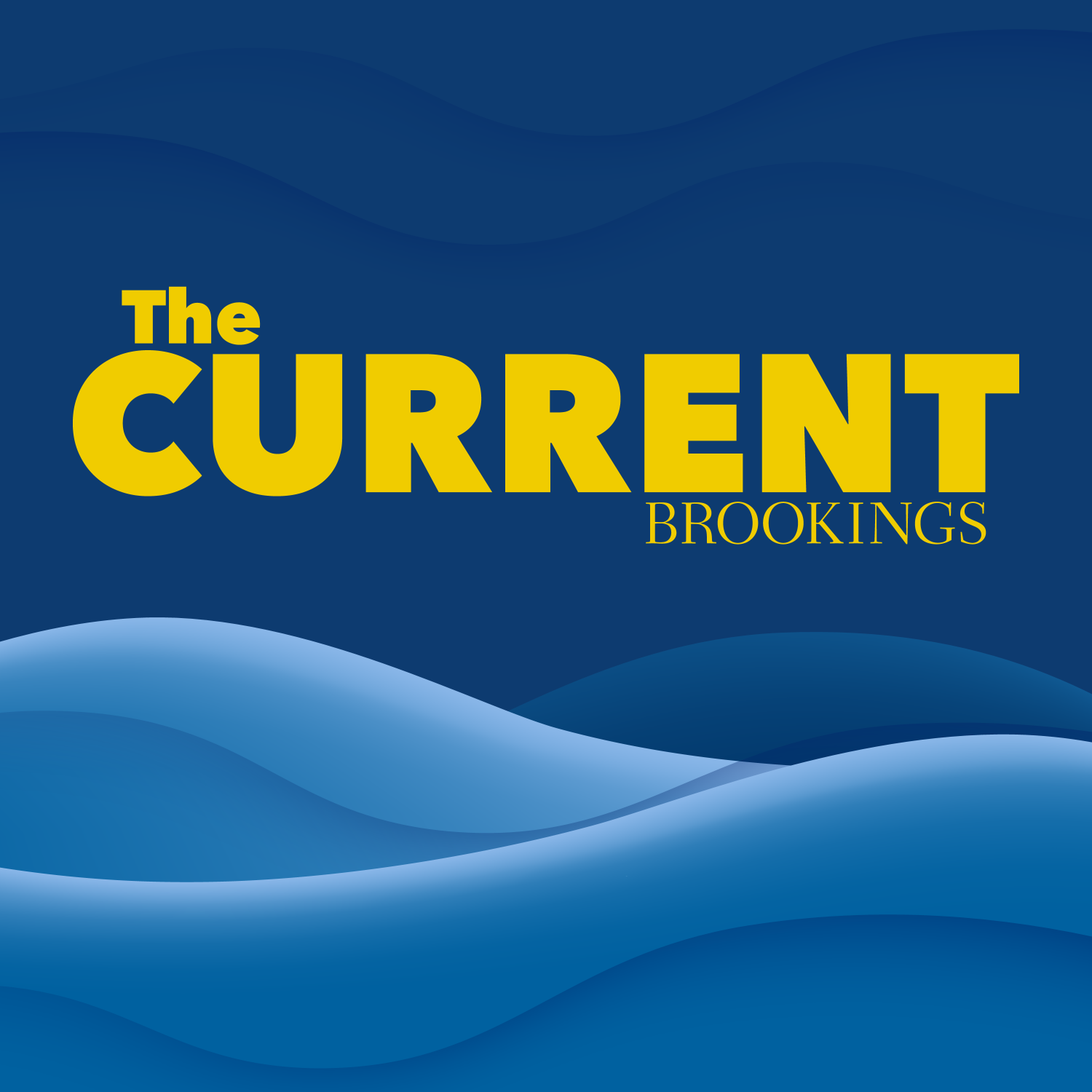Building on previous visits from high-level Cabinet officials, Vice President Kamala Harris’ trip to Singapore and Vietnam adds positive momentum to the Biden administration’s efforts to re-engage with key partners in Southeast Asia. Jonathan Stromseth explains why it’s important for America to expand its political and economic agenda in the region with an eye to deepening positive, long-term relationships, not just to counter China’s security and economic influence.
Related material:
- Rivalry and Response: Assessing Great Power Dynamics in Southeast Asia
- The US must urgently rethink its economic policies in Asia
Listen to Brookings podcasts here, on Apple or Google podcasts or on Spotify, send email feedback to [email protected], and follow us at @policypodcasts on Twitter.
Thanks to audio producer Gaston Reboredo, Chris McKenna, Fred Dews, and Marie Wilken for their support.
TRANSCRIPT
PITA: This week, Vice President Kamala Harris traveled to Southeast Asia, stopping in Singapore and Vietnam as part of the Biden administration’s efforts to strengthen U.S. relations in the Indo-Pacific. With us to discuss the outcomes of the vice president’s trip and U.S. strategy in the region is Jonathan Stromseth, senior fellow and Lee Kuan Yew chair in Southeast Asian studies here at Brookings. Jonathan, thanks for talking to us today.
STROMSETH: Very nice to be here.
PITA: So, what can you tell us about the purpose for this trip? Defense Secretary Lloyd Austin also recently visited Southeast Asia in July, including stops in Singapore and Vietnam, so it seems pretty notable that there’s a follow-up here with visits from the vice president. What’s their significance to the U.S. and the Biden administration?
STROMSETH: Well, officially, the purpose of the trip was to strengthen partnerships with Singapore and Vietnam, and with Southeast Asia as a whole, focusing especially on global health, economic ties, and regional security. But it’s also a broader effort to re-engage with the region, as U.S. engagement had waned during the Trump administration and also got off to a slow start under Biden. It didn’t go unnoticed, for instance, that Cabinet-level officials from the Biden team had made early visits to Japan, India, and South Korea, but not to Southeast Asia. And things began to change in recent months, as you just pointed out, with high-level visits by Deputy Secretary of State Wendy Sherman, Defense Secretary Lloyd Austin, so in many ways the vice president’s visit is building on the momentum of these recent efforts.
Of course, it also hadn’t gone unnoticed in Washington that Chinese diplomacy has gone into hyperdrive over the past year, including its vaccine diplomacy, with top Chinese diplomats meeting Southeast Asian counterparts by some counts, at least 21 times since August 2020.
So, much is at stake for U.S. foreign policy and American interests in the region. Almost 42,000 U.S. companies export to the 10 countries that make up the Association of Southeast Asian Nations, or ASEAN, supporting about 600,000 jobs in the U.S. And Southeast Asia also includes two U.S. allies, Thailand and the Philippines, as well as important security partners like Singapore and key emerging partners like Vietnam.
PITA: She stopped off first in Singapore; as you mentioned, they’re a key ally of ours. What meetings was she having there? What were the highlights of that stop?
STROMSETH: Well, Harris met with Prime Minister Lee Hsien Loong and announced agreements on common security challenges, climate change, and building resilient supply chains, among other topics. She also visited the Changi Naval Base to discuss U.S.-Singapore defense relations with Singapore defense officials.
But I think the highlight there was a speech that she gave at the Lee Kuan Yew school of public policy, focusing on America’s vision for the Indo-Pacific region under the Biden administration. In that speech she put forward a positive vision of peace and stability, freedom of the seas, unimpeded commerce, advancing human rights – including in places like Burma – and a commitment to the international rules-based order. In a departure from the Trump-era rhetoric, she said U.S. engagement in Southeast Asia and the Indo-Pacific is not against any one country, nor is it designed to make anyone choose between countries, which is an obvious reference to China. But at the same time, she pointed out that China continues to coerce, intimidate, and make unlawful claims in the South China Sea, undermining that rules-based order that the United States is trying to promote.
She also addressed the pullout in Afghanistan, indicating that as the U.S. addresses urgent developments there it’s also capable of continuing to advance U.S. interests in other regions like Southeast Asia.
PITA: Yes, of course, while the vice president was traveling, the U.S. is in its final weeks of withdrawal from Afghanistan, trying to evacuate not only U.S. personnel, but as many Afghan allies and refugees as possible before the August 31 deadline. And many are drawing parallels to the U.S. evacuation from Saigon in 1975. What has been the reaction from U.S. allies in the region to what’s been happening there?
STROMSETH: Well it’s true that the vice president was peppered with questions about Afghanistan during her press avails during the trip, when, I assume, she would have preferred to speak about the region itself. But the reaction among Southeast Asia policy experts has been mixed; some worry that the Taliban’s takeover could inspire extremism in the region, and they say the U.S. pullout raises serious questions about the credibility of American defense commitments.
Others, on the other hand, see a silver lining in this tragedy. In this line of thinking, if the Harris visit is followed up by vigorous diplomacy matched with resources, then perhaps the pivot to Asia, or the rebalance policy of the Obama administration, can finally be realized as the U.S. becomes less distracted by these endless wars in the Middle East. So, perhaps surprisingly, they see the glass as half full or at least potentially positive for U.S. engagement in Southeast Asia in the future.
PITA: Vietnam was very much a focal point of this trip; the vice president spent a little more time there than in Singapore. What were some of the important outcomes there, and how does the importance of that leg of the trip reflect on the current U.S.-Vietnam relationship?
STROMSETH: Well, if I could, I would just first like to point out that U.S.-Vietnam relations have expanded significantly in recent years, seen in growing trade ties, strong people-to-people relations, and, frankly, a common concern about China’s actions in the South China Sea and its rising economic influence in mainland Southeast Asia among Vietnam’s neighbors. Highlights include the establishment of a comprehensive partnership in 2013 and a dramatic visit of the U.S. aircraft carrier to Da Nang and central Vietnam in 2018.
I believe that it may soon be time to take the next step of elevating the U.S.-Vietnam relationship to a formal strategic partnership in diplomatic terms. This has been discussed off and on for years in quiet diplomacy, but never quite consummated. And, as a supporter of this idea, I was very pleased to see that when Harris met with President Nguyen Xuan Phuc in Hanoi, she stated publicly that the two countries should consider doing what they can to upgrade the relationship as a strategic partnership. This would not only facilitate deepening relations, in my opinion, but would send a positive message to the region that U.S. relationships are innovative and growing, and that the U.S. is there to stay.
So, another notable development was the formal opening of a Southeast Asian regional office in Hanoi for the CDC. And in connection with this opening, Harris held a meeting with ASEAN health ministers to discuss the pandemic and other regional health issues. I think the new office shows that the bilateral relationship is expanding in new ways and illustrates that a strategic partnership doesn’t have to focus only on security, but can address issues and other important issues like containing and preventing pandemics in the region.
PITA: There was one curious incident on the vice president’s trip between Singapore and Vietnam. The vice president’s flight out to Hanoi was at the last minute delayed by a few hours, and since, reports have come out of incidents of what’s being called the Havana syndrome showing up amongst some U.S. embassy staff in Hanoi. What was it that happened there?
STROMSETH: During the delay, Beijing apparently sent its envoy in Hanoi to meet with Vietnamese Prime Minister Phạm Minh Chính to pledge two million vaccine doses for Vietnam, COVID-19 vaccine doses, basically undercutting Vice President Harris’ planned announcement, once she arrived, of one million Pfizer vaccines. It seemed like a petty maneuver and when thanking the Chinese ambassador Prime Minister Chinh noted that Vietnam, and I quote, “does not ally with one country to fight another.”
Anyway, Vietnam is really in dire need of vaccines as it struggles to manage the delta variant that’s surging in the country right now. It currently has the lowest COVID vaccination rate in Southeast Asia with just under 2% of the population fully vaccinated. And this comes as such a surprise because Vietnam has been held up as a model for containing COVID up until just recent weeks, where they’ve been able to combine highly coordinated contact tracing and quarantining with effective messaging campaigns. Ultimately, this shows just how important the vaccines are in battling COVID, especially the delta virus that we’re facing now.
PITA: China has come up several times in our conversation; it came up a lot in, of course, all the media reporting on the vice president’s trip. I want to ask you a to end on a big picture note here. China is so often the lens through which U.S. relations in the Indo-Pacific is viewed through; competition with China, whether it’s military issues, whether it’s trade. How much is that the correct lens to use or how much is that overused as a potential framework for these relationships?
STROMSETH: Well, Southeast Asia has become a hotbed of U.S.-China rivalry, even possibly the epicenter in the world as China carries out aggressive efforts to secure its sovereignty claims in the South China Sea and as the U.S. has developed, first under Trump, a broader Indo-Pacific strategy that seeks to counter Chinese expanding influence in the region. But in this context, I think it’s important to recognize that most ASEAN countries want to have constructive relations with both the U.S. and China, and they often feel caught in the middle. And therefore, it’s also important for the U.S. to engage these countries on their own terms, based on a positive political and economic agenda, rather than approaching them simply as derivative of U.S. competition with Beijing. Harris got the messaging right on this trip, I think a big improvement from the Trump era, but I sense that the region remains cautious as they actually perceive Biden to be just as hardline on China on substance if not on rhetoric.
In my opinion it’s also important for the U.S. to recognize that China is increasingly achieving its strategic goals in Southeast Asia through economic statecraft, illustrated in its Belt and Road Initiative and proactive role in forming RCEP, which is the mega-trade deal that is expected to accelerate the region’s economic integration with China, which is already very significant.
But, all in all, I think it was a positive trip to the region, helping to continue the positive momentum of other recent visits that we discussed earlier by high level officials of the Biden administration. But I still would have preferred to see more concrete initiatives on the economic front. Joining TPP would be probably too heavy of a lift for some time, domestically, at least for now. But the administration could do other things like operationalize existing infrastructure platforms with Japan and Australia in the region or appoint maybe a special envoy to facilitate such cooperation. But there’s still time for that.
PITA: All right. Jonathan, thanks very much for talking to us about this today.
STROMSETH: I enjoyed it, thank you.
The Brookings Institution is committed to quality, independence, and impact.
We are supported by a diverse array of funders. In line with our values and policies, each Brookings publication represents the sole views of its author(s).







Commentary
PodcastWhat did Kamala Harris’ trip do for US engagement in Southeast Asia?
August 27, 2021
Listen on
The Current Podcast